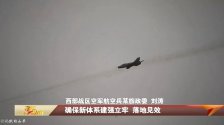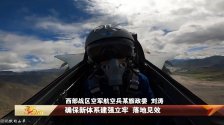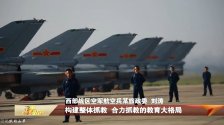You are using an out of date browser. It may not display this or other websites correctly.
You should upgrade or use an alternative browser.
You should upgrade or use an alternative browser.
The Q-5, J-7, J-8 and older PLAAF aircraft
- Thread starter adeptitus
- Start date
well, this is how big organization works, budget is divided through numerous departments, and therefore you only have so much money to replace old equipmentsPLAAF is such a strange animal. On one hand you’ve got J-20s and J-16Ds with J-35 prototype already in the air, on the other you still have J-7s that are alive and well. It really runs the gamut between world class aircraft and obsolete relics.
View attachment 78622
View attachment 78623
View attachment 78624
and there is also needs to maintain a big pilots team
Not much prospect of service life left in those J8 and J7. I wouldn't be surprised if there's only 250 or so of combat J8/J7 left combined. (does not include JJ7 conversion trainers nor recce J8) Basically, within 3 years time we might see both types retired from combat duty.
Who is to say these might not become relevant again?PLAAF is such a strange animal. On one hand you’ve got J-20s and J-16Ds with J-35 prototype already in the air, on the other you still have J-7s that are alive and well. It really runs the gamut between world class aircraft and obsolete relics.
View attachment 78622
View attachment 78623
View attachment 78624
In my short time PLA watching I have been impressed by the great care China takes of its older equipment, from aircraft to ships.
They always seen to upgrade older equipment to keep it relevant and in the fight, perhaps with a changed role. E.G. old destroyers -> sub hunters.
Now, I am no expert, but I can imagine an EM/Cyber environment where j20 might not be operable, but a j7 could be, simply because of its low technology level.
Also, if you have all your modern aircraft destroyed then you will be thankful to have plenty old ones as backup.
Modern aircraft need a lot more maintenance to keep them in full capability. Flying them intensively is grindy and they become Hangar queen in no time. We had 24 CF-18 in war simulation training at green bay, only two aircraft were flyable after one week and an half.... imagine an aircraft with ram that need to be care off with big electronic suit to maintain, etc.Who is to say these might not become relevant again?
In my short time PLA watching I have been impressed by the great care China takes of its older equipment, from aircraft to ships.
They always seen to upgrade older equipment to keep it relevant and in the fight, perhaps with a changed role. E.G. old destroyers -> sub hunters.
Now, I am no expert, but I can imagine an EM/Cyber environment where j20 might not be operable, but a j7 could be, simply because of its low technology level.
Also, if you have all your modern aircraft destroyed then you will be thankful to have plenty old ones as backup.
More than 40hrs maintenance per hours of flight for a f-22, around 20hrs/flight hours for f-18 f-16 and around 12 for mig-29 and F-5.
F-117 was over 100hrs per hours of flight...outch.
J-7maintenance hours is probably at low end, maybe around f-5 time. It make it capable to fly numerous time in the same day. A top of the line fighter, flying more than once probably make it unavailable for the next day...
Keeping j-7 could be a life saver in a long term campaign.
J-7s will guard the motherland forever, alongside ZTZ-59s and HJ-73s. They will outlive us allPLAAF is such a strange animal. On one hand you’ve got J-20s and J-16Ds with J-35 prototype already in the air, on the other you still have J-7s that are alive and well. It really runs the gamut between world class aircraft and obsolete relics.
View attachment 78622
View attachment 78623
View attachment 78624
szbd
Junior Member
All Q5 were retired, about half were upgraded version produced in 21th century. There must be a special reason they kept much older J7Who is to say these might not become relevant again?
In my short time PLA watching I have been impressed by the great care China takes of its older equipment, from aircraft to ships.
They always seen to upgrade older equipment to keep it relevant and in the fight, perhaps with a changed role. E.G. old destroyers -> sub hunters.
Now, I am no expert, but I can imagine an EM/Cyber environment where j20 might not be operable, but a j7 could be, simply because of its low technology level.
Also, if you have all your modern aircraft destroyed then you will be thankful to have plenty old ones as backup.
Not sure the late model J-7's can be fairlywell, this is how big organization works, budget is divided through numerous departments, and therefore you only have so much money to replace old equipments
and there is also needs to maintain a big pilots team
Is it fair to call late model J-7''s obsolete relics? They had upgraded it to produce a very viable point defence fighter and in the last 10 years or so had been relegated to Regiments that did not appear to be "front line" in terms of being based near potential hot spot like Taiwan. But yes, if course there is a great difference with units flying the latest aircraft. Seems similar to Russian Air Force flying legacy Su-27's and Mig-29's in areas like the far East or southern region.PLAAF is such a strange animal. On one hand you’ve got J-20s and J-16Ds with J-35 prototype already in the air, on the other you still have J-7s that are alive and well. It really runs the gamut between world class aircraft and obsolete relics.
View attachment 78622
View attachment 78623
View attachment 78624
It has a very "Phantomish" noseA wooden mockup of JH-7. It was assembled in 1979.





